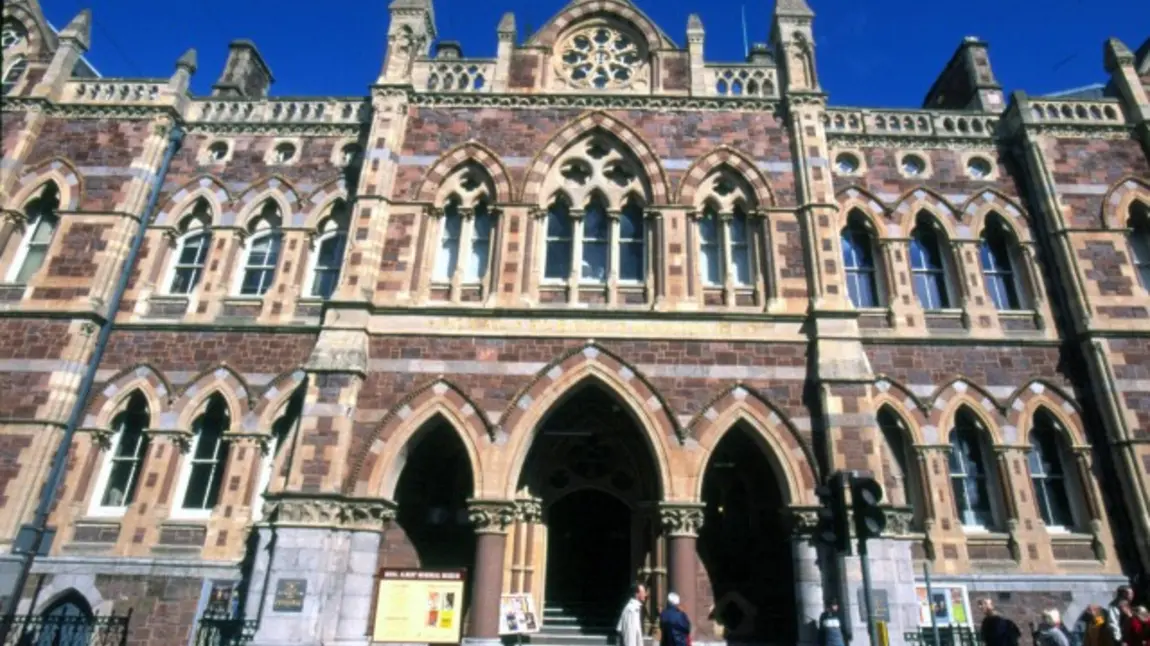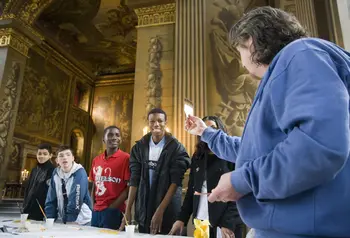Exeter’s heritage makes us happy

Local heritage and historical sites make Exeter a better place to live, say an overwhelming majority of residents in a new study.
Museums, libraries and famous buildings are all important to local people, are a source of pride and also give the city a sense of identity.
These are some of the main findings in a study that reveals how there is a direct link between heritage and the quality of life.
Specialist research company, BritainThinks, conducted the in-depth study in 12 towns and cities representative of the UK population to mark 20 years and £6billion of investment in the UK’s heritage by the Heritage Lottery Fund (HLF). The report was commissioned to understand the public’s view of heritage and National Lottery investment and to see to what extent places had been made better places to work, visit and live in. One of 12 locations was Exeter whose residents gave a big thumbs-up to their local attractions.
The study quizzed people about a range of 10 heritage sites including the Royal Albert Memorial Museum and Art Gallery (RAMM), Topsham Museum, the Devon Record Office and Exeter Cathedral
Nerys Watts, Head of HLF South West England, said:“The results of this study show that a range of well looked after heritage attractions create a significant ‘feel good factor’ for local people. They see that heritage not only brings practical and economic benefits to their city but they also have an emotional reaction and pride in local historic sites.”
Key UK findings
- 80% think local heritage makes their area a better place to live
- 64% think heritage has improved in recent years in terms of how well it is looked after and what it has to offer
- Heritage plays a powerful role in bringing people together and helping to improve perceptions of quality of life
- Benefits of heritage seen as both transactional and emotional, encouraging local pride and fostering social cohesion
Key findings in Exeter
- The wealth of heritage sites in Exeter was viewed as a source of local pride by 84% of respondents. Some 89% said it was an important factor in attracting tourists to the city and 85% said it made Exeter a better place to live
- An overwhelming 94% of those surveyed were aware of RAMM, 66% of the Topsham Museum, 64% of the Devon Record Office and 52% the reading rooms at Exeter Cathedral
- Local residents were also appreciative visitors of local heritage. Some 75% had been to RAMM. An overwhelming 88% say they enjoyed their visits and 85% felt the historic attractions were well maintained. They also enjoyed the fact that heritage sites gave them a better understanding of local history
- Exeter residents were almost universally of the view (93%) that heritage was important to the country as a whole
- Just over half of those interviewed (57%) had heard of HLF and 71% of locals felt that the money invested in ten local projects (£16,483,850) was a good or excellent use of Lottery players’ money. Only 7% felt it was a poor or very poor use of Lottery funds
Camilla Hampshire, Museums Manager, RAMM, said:“Exeter’s rich history is intrinsic to its modern day identity, creating the special sense of place that attracts visitors to the city and contributes to the quality of life of residents. The partnership with the Heritage Lottery Fund has helped us celebrate this, touching and enriching the lives of everyone who lives, works or visits our wonderful city.”
Please click on HLF's 20 years 12 places webpage to find out more – including a UK summary report, an essay of the main findings, research slides, reports for each place with films plus more detail on the methodology. Follow us on Twitter - #20Years12Places @HLFSouthWest @heritagelottery
Notes to editors
Royal Albert Memorial Museum and Art Gallery. A fine example of the Gothic Revival, described by architectural consultant and broadcaster Dan Cruickshank as “an exquisite jewel box of a building”, it has won a host of awards since it reopened in 2011, including Museum of the Year 2012, following a £24million restoration that included an HLF grant of over £10m.
Topsham Museum. The museum received a £261,000 HLF grant in 2005-06 to build an extension to house four historic boats with links to the area and memorabilia relating to Captain George Peacock, a prominent 19th century maritime innovator. One of the vessels, an elegant small yacht, was built in the shape of a swan.
Exeter Cathedral, Another Chapter. The cathedral library is the oldest surviving library in Devon, founded in the 11th century by Leofric, the first Bishop of Exeter. The project, supported by an HLF grant of £808,800, used a former archive space on the first floor of the Pearson building for the benefit of schools and formal learning; and equipped the ground floor of the west wing of the Bishop’s Palace as a library and for archive studies.
A total of 350 residents of Exeter took part in the survey. Ten heritage sites that were drawn to their attention by the pollsters were: Royal Albert Museum and Art Gallery (RAMM), Topsham Museum, Devon Record Office, Cricklepit Mill, Reading Rooms at Exeter Cathedral Library, Bill Douglas Centre, Tuckers Hall, John Betjeman’s Library, Avalon Marshes, Xarch – exploring archaeology project. All have received HLF grants at various times over the past 20 years.
Further information
Laura Bates, Communications Manager at the Heritage Lottery Fund on on tel: 020 7591 6027 or via email lbates@hlf.org.uk
